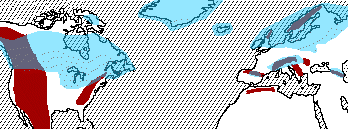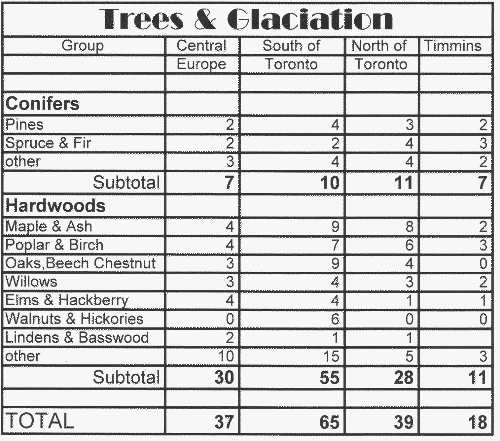The diversity of tree species in an area reflects to some extent its glacial history. Europe north of the Alps has fewer native timber trees than an equivalent part of North America. The conjecture is that the forests of northern Europe were squeezed between the arctic conditions in front of the Scandinavian ice sheet and the east/west mountain chains especially the Alps. The mountains in North America on the other hand, run roughly north south, so the forest ecosystems had a better chance of retiring to milder climes. The table below was prepared to illustrate these differences in diversity. Because Toronto is on the boundary between the Carolinian Forest and the Great Lake St. Lawrence Forest, points south (northern New York, western Pennsylvania) and north (Huntsville, Algonquin Park) were chosen for this survey. Given equal conditions, central European forest should have the diversity of the Carolinian Forest, having a climate somewhat milder than Toronto’s.

The Boreal Forest’s even greater loss of diversity was probably the result of having to move farther and probably faster than the Carolinian Forest. Timmins was chosen as a typical Boreal Forest location.

The main references used were “Trees in Canada” by Farrar and “Collins Wildlife Trust Guide, Trees, a Photographic guide to the Trees of Britain & Europe by K. Rushforth 1999.
Other Pages in this Series
- Don Valley Brick Works Quarry - North Wall
- Before the Ice Age
- How The Glaciers Started
- The Great Delta
- Maximum Extent of the Ice Sheets
- The Story From The Lakes
- Early Stages of the Retreat of the Ice Front
- Drumlins and Flutings
- Lake Iroquois & its shore cliff
- The Wide Valley of the Lower Don
- Geology References
